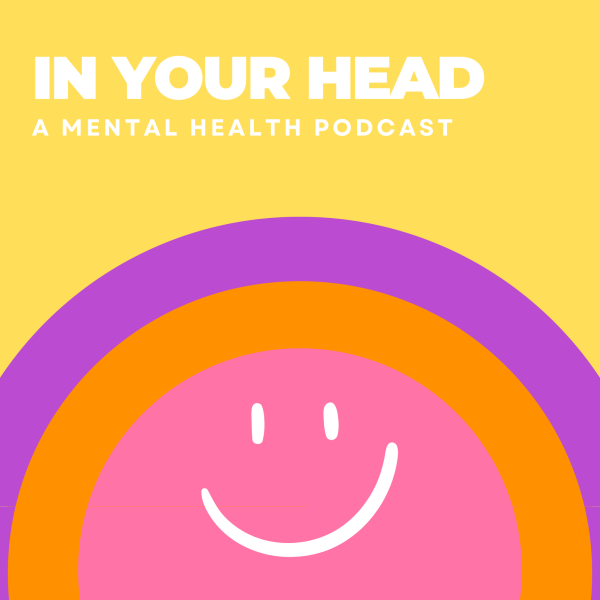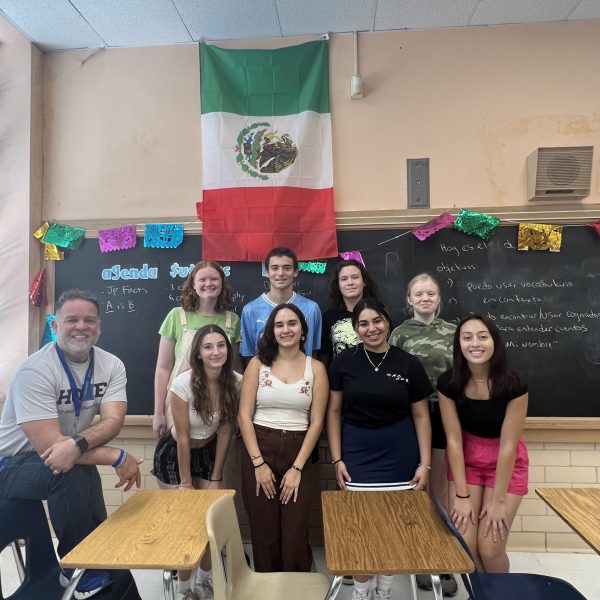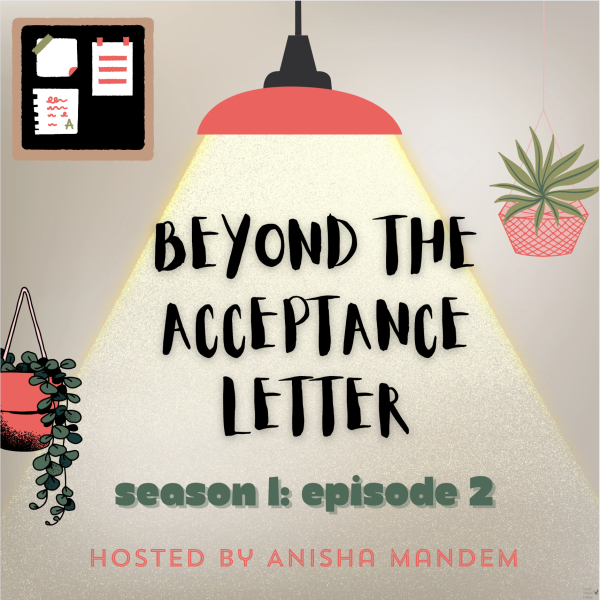Episode Two: Carieal Doss, Forever 18
May 3, 2021
[a beat comes in]
Before we begin, a quick disclaimer. This episode will focus solely on facts and personal stories, in the hopes of humanizing the tragedy of gun violence in St. Louis. It is never our goal to perpetuate dangerous stereotypes, and we want to be clear that when we discuss the problem of gun violence, we are blaming the system, not the individuals who are affected by it. We are conscious of the language used in this episode, and acknowledge that no matter who the victims of these tragedies were, the violence was entirely undeserved.
[beat ends]
In the days and weeks following Carieal’s death, news sources pumped out headlines of the “One of a kind” coworker who “Could make anyone laugh.” Johnetta’s experience with her daughter was no different.
I just want people to know, you know, my daughter, she, she didn’t just touch me, you know, she touched so many different lives from, from her friends to her siblings, you know, to other family members in our, in our family. And, you know, to lose her the way that we lost her. Um, it was just very traumatic, you know, for everyone. And her siblings are, you know, coping, or trying to cope now. And I just want the world to know that, you know, my child was a very giving person with a big heart. She was witty, she was a little jokester, you know, and people miss that, you know, because sometimes we are coming from places that were struggling with things and nobody knows what we’re struggling with. And just to have someone you know, to walk in the classroom, and you know that that person is going to be there. And they make you laugh or smile every single day, you know, and deep down, they don’t know what you’re going through. But you know what you’re going through, and they make your days better, you know, that’s missed, and so missed from the world. So, you know, I just want the world to know what, what type of person my child was. And, you know, all of her–the things that she’s done, you know, from basketball to art to, you know, everything. She was just well-rounded with so many things.
But in the two to three days where Carieal had not been identified, other news outlets had some unsavory things to say. One outlet wrote a story titled, “A Girl Was Killed Two Days Ago in St. Louis and Nobody Has Identified Her.” They ended their story saying, “No one has come forward to claim her body. Maybe no one has noticed she’s missing.” Stories like these quickly reached the Doss family, and, as mentioned in episode one, painted a picture of a missing child and a family who didn’t care.
Honestly, I wasn’t even on the internet. I wasn’t even on Facebook or anything. My 15 year old daughter happened to be on Facebook and she said that she’d seen something with Real STL news. And they were talking about how Carieal was a runaway, and they were saying something about sex trafficking. I mean, it was just a whole bunch of things that they were saying, you know, [that] she, she doesn’t have a mother or father, it was so far from the truth. And my daughter was so upset about it, you know, and she made a post on my page. And she was just like, you know, anybody that knows my mother, knows doggone well that she loves her kids. And my sister was not this, my sister was not that, you know, and so she kind of cleared the air. But, you know, the media, I feel, painted a picture of her not, you know, like, no one was looking for her. No one had, you know, um, came forward to say who she was. And it was so far from the truth. Because, you know, if you don’t know, something, you just don’t know, how are we supposed to know to look in St. Louis City if she left in St. Louis County? You know, so it was just, we didn’t know, but we were looking for her in the wrong places.
The judgement Johnetta experienced by the media reminded her that in these situations, families of victim’s and the public alike must be wary of information being shared so rapidly after an incident like this.
For the Doss family, the media’s description of Carieal bore no resemblance to her actual features. The picture of Carieal’s clothing in the article was the only giveaway.
You have to be careful when you’re, when you’re listening to the media, because the media doesn’t always, you know, tell you the truth. You know, they paint this picture. If it wasn’t for the clothes, we probably, we’d probably be still looking for my daughter to this day. You know what I mean? Because we had no idea. Um, you know, the, what they were saying was, she was 13 to 16. She was 18. You know, “braids,” No braids, you know, and it was just, she was, she was 100 pounds. You know, they were like, ‘Oh, she was’ because no, I’m sorry, she was ‘between 80 pounds 80 pounds and 95 pounds,’ [but] she weighed 110. You know what I mean? So, I would have, I had not, you know, I would have never looked at that and said that was my child. If it was not for the clothes and people, you know, and her friends on Facebook..
I didn’t bat back because I felt like, you know, one, I have a different battle to fight, you know, me trying to straighten up people or put them in their right places, or, you know, that wasn’t for me at that time. You know, because I was dealing with the fact that I lost my child, so I could care less about who was saying what, you know, and I feel like, you know, at the end of the day, the truth needs no support. Anyone that knows me knows my child [and] knows my other children, know that I have always played a part in their life. They have always been with me, you know, and there was no homelessness, there was no trafficking. It was none of that, you know, and it’s just, people paint pictures, to, like, make their own stories, you know, and my daughter was simply saying that people were on there making up, like literally, making up stuff. I didn’t want to see it. Because I was, I was in a different space. I was just hurt, you know, I was just missing my child just wanted her. And so, for me, it was it was a totally different atmosphere. It didn’t matter to me. All I wanted and all I was set on is ‘Who did this? Why was it done? And why was it done to my child?’ It was so many different levels of pain that I was going through. And for me to sit on Facebook and try to combat with people, it just wasn’t something that I was willing to do.
The St. Louis Post-Dispatch reports that the city’s homicide rate hit 87 killings per 100,000 residents in 2020, the year Carieal was killed, which is the highest on record since 1970. But this data is not created in a vacuum. America, and the City of St. Louis specifically, has a cycle of violence that runs parallel with the cycle of poverty, and its roots can be drawn all the way back to America’s response during the post-civil war Reconstruction Era. More modern impacts to this racial disparity in crime can be blamed on redlining, which keeps communities that are largely African American, in poverty. Redlining is almost entirely at fault for the high crime disparity we see in the Black community, but we can also point fingers at racial discrimination by America’s criminal justice system. Johnetta acknowledges these as factors that keep this cycle of violence, cycling.
We have a lot of children that are growing up without parents, without being in a two family home, and just a single parent home. We have children that are out here that are young, young 15, you know, 14, they are raising themselves, and they are literally going off of what they see on the videos, you know, hip hop videos and listening to the raps and what these people are saying, you know, and that’s how they are. In their mind, that’s how life is supposed to be. So when you have a child, that is pretty much leading, the blind leading the blind. What can a 15 year old 14 year old child teach himself teach herself, you know? So these are the things they don’t know anything about morals and values that if someone is not putting it in them, they don’t know anything about what they should and shouldn’t do, if someone is not telling them. You know, a lot of people think that ‘well, that’s common sense.’ But your common sense, and someone elses common sense is two totally different things. So to think that someone would know something because of their age, is very feeble-minded. You know, if a person hasn’t been taught something, and they don’t know, they just don’t know, it doesn’t matter what age you are, you just don’t know. And so what we’re dealing with, you know, back in the 80s, and 90s, crack cocaine was very prevalent in our area.
And we know that drugs are everywhere, but I’m speaking about where I come from. And so, the area that I was in and where I grew up in, it was definitely drugs in the area. And, we’re just, you are speaking to, to a person that has seen a lot, you know. I’ve seen, you know, a woman, you know, give her body up for drugs, give her kids up for drugs. So now we are in, where are we at right, right now. And these are children. I was born in that era, the 1990s, late 90s, you know, early 2000s, you know, now we’re dealing with a child that was actually born as a crack child, you know, so how, how do you, how do you grow up and fix that problem, If you- if they don’t get help? You know, so we’re growing up in destruction and disruption, you know, and nobody is fixing the issue, because it starts in court, you know. We have to find out where it starts from a majority of the time, you know, you’re looking at kids that they don’t have a mother, they don’t have a father, the fathers are in the penitentiary, or they’re deceased; But mothers are drug addicts, or they’re just out in clubs or want to be, you know, tied up with a man that doesn’t accept their children. So you’re dealing with all of these dysfunctions. And the children are coming up in this, and they think that they know that this is how it’s supposed to go. Well, if you you know, go back to again, if nobody ever teach you anything, you don’t know. So now we’re dealing with the bigger problem. We’re dealing with children that are just out of control, but they’re out of control, because they have no guidance. So now we’re we’re going in with the gunplay, they’re listening to the hip hop. They’re listening to everything that these rappers are saying, and they’re trying to live this life and they want to be seen, they want to be heard, but they’re asking for the wrong type of attention. You know, they want attention, but they they’re asking for the wrong type of attention. And then when gangs get involved, and they get a hold to them, you know, everything goes left, you know. So that’s, that’s the biggest issue that we’re dealing with right now in St. Louis city.
Still, Johnetta tried to piece together the story, in hopes of comprehending the incomprehensible crime committed against her daughter. Understandably, at times this pain could only be quelled with thoughts of revenge.
At first, honestly, I thought Carieal may have fell asleep at a friend’s house, and she may have turned her phone off or something. I was never thinking the worst on that. But what was going through my head was, why? You know, I just I was, I just wanted to know why, I wanted to know why. Anybody that knew Carieal knew that she would give you the shirt off her back, like, literally and walk away with nothing. Um, but I was trying to figure out, she had no enemies, you know, everybody loved the girl. Um, and, and I kept saying, why? Or, what happened? You know, like, what was going through my head [was] like, what happened? Was she, what was she doing down there? You know, like, who does she know, down there? Um, I, it was so many different things that were going through my head that, for me, it was just, it was so much. It was so much, and to find out where she was shot at, there, then that changed the dynamics of things because it really changed the dynamic of things because I was like, ‘Okay, well, you know, being shot from the back, you know, that, to me indicated, she had no, no worries of that, or it didn’t even– for her to turn her back.’ You know what I mean? I just felt like it she she had no way of knowing it was coming, you know, so it was so many different things that was going through my head on this, why my child: who did it, what for, you know, we know that her that her cell phone was stolen, we do know that we know that her money was taken. We do know that. And, and it was like, who would want to do this? Who [would] want to rob my child and kill her? So it was just a lot of different things that were going through my head at that time. Revenge, um, who, who whoever did it, I’m definitely coming after, coming after them. You know, and that was, those are all feelings that, you know, any parent will feel by being violated the way that I was violated.
[string music comes in]
That was episode two of the three part series “Carieal Doss, Forever 18.” Check back for the final episode, which will detail the impact of Carieal’s death on her mothers mental health. We will also discuss stigma surrounding mental health in the Black community, as well as Johnetta Doss’s book and other projects that she is creating in remembrance of Carieal.
This is It’s Not Black and White.
[music cuts]
This story was originally published on Pathfinder on April 30, 2021.






























![IN THE SPOTLIGHT: Junior Zalie Mann performs “I Love to Cry at Weddings,” an ensemble piece from the fall musical Sweet Charity, to prospective students during the Fine Arts Showcase on Wednesday, Nov. 8. The showcase is a compilation of performances and demonstrations from each fine arts strand offered at McCallum. This show is put on so that prospective students can see if they are interested in joining an academy or major.
Sweet Charity originally ran the weekends of Sept. 28 and Oct. 8, but made a comeback for the Fine Arts Showcase.
“[Being at the front in the spotlight] is my favorite part of the whole dance, so I was super happy to be on stage performing and smiling at the audience,” Mann said.
Mann performed in both the musical theatre performance and dance excerpt “Ethereal,” a contemporary piece choreographed by the new dance director Terrance Carson, in the showcase. With also being a dance ambassador, Mann got to talk about what MAC dance is, her experience and answer any questions the aspiring arts majors and their parents may have.
Caption by Maya Tackett.](https://bestofsno.com/wp-content/uploads/2024/02/53321803427_47cd17fe70_o-1-1200x800.jpg)
![SPREADING THE JOY: Sophomore Chim Becker poses with sophomores Cozbi Sims and Lou Davidson while manning a table at the Hispanic Heritage treat day during lunch of Sept 28. Becker is a part of the students of color alliance, who put together the activity to raise money for their club.
“It [the stand] was really fun because McCallum has a lot of latino kids,” Becker said. “And I think it was nice that I could share the stuff that I usually just have at home with people who have never tried it before.”
Becker recognizes the importance of celebrating Hispanic heritage at Mac.
“I think its important to celebrate,” Becker said. “Because our culture is awesome and super cool, and everybody should be able to learn about other cultures of the world.”
Caption by JoJo Barnard.](https://bestofsno.com/wp-content/uploads/2024/01/53221601352_4127a81c41_o-1200x675.jpg)












